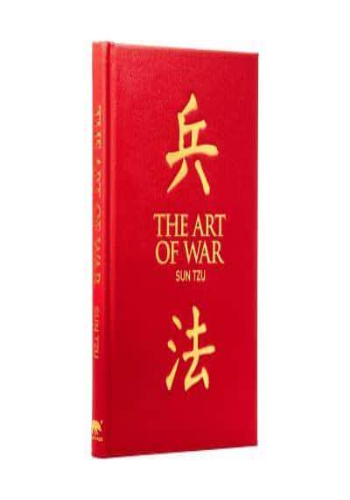Chapter 1: Laying Plans
* Summary: The importance of careful planning and the need to consider various factors before engaging in battle, including the enemy's strength, terrain, and resources.
* Example: A military commander carefully studies the enemy's territory, noting potential ambush points, defensible positions, and supply lines.
Chapter 2: Waging War
* Summary: The art of winning battles by exploiting the enemy's weaknesses and limiting their resources.
* Example: A guerrilla army uses hit-and-run tactics to harass and deplete the enemy's forces, avoiding direct confrontation.
Chapter 3: Attack by Stratagem
* Summary: Using deception and manipulation to outwit the enemy and gain an advantage.
* Example: A general uses a decoy force to distract the enemy while his main army attacks from behind.
Chapter 4: Disposition of Troops
* Summary: The proper deployment of troops to maximize their effectiveness and minimize losses.
* Example: An army arranges its troops in a defensive formation, with archers in the front, infantry in the middle, and cavalry in reserve.
Chapter 5: Energy
* Summary: The importance of maintaining high morale and motivation among troops.
* Example: A commander gives inspiring speeches, provides rewards for valor, and creates a sense of camaraderie among his soldiers.
Chapter 6: Weak Points and Strong Points
* Summary: Identifying the vulnerabilities and strengths of both your own forces and the enemy's.
* Example: A scout reports that the enemy's weakest point is their supply chain, which can be exploited with a surprise attack.
Chapter 7: Manoeuvring
* Summary: The art of moving troops quickly and effectively to gain an advantage over the enemy.
* Example: A cavalry unit uses swift flanking maneuvers to encircle and trap the enemy's infantry.
Chapter 8: Variations in Tactics
* Summary: The need to adapt tactics to different situations and to avoid predictability.
* Example: An army changes its formation to counter the enemy's changing strategy.
Chapter 9: The Army on the March
* Summary: The challenges and strategies involved in marching an army over long distances and in unfamiliar territory.
* Example: An army takes precautions against ambushes by sending out scouts and maintaining a well-ordered march formation.
Chapter 10: Terrain
* Summary: The importance of understanding the terrain and using it to your advantage.
* Example: A general chooses to attack the enemy on a narrow bridge, forcing them to fight in a confined and disadvantageous space.
Chapter 11: The Nine Situations
* Summary: An analysis of nine different battle situations and the appropriate strategies for each one.
* Example: If an army is much smaller than the enemy, it may be wise to adopt defensive tactics and avoid open confrontation.
Chapter 12: Fire Attack
* Summary: The use of fire as a weapon in warfare.
* Example: A general uses burning arrows to set fire to the enemy's camp, causing chaos and destruction.
Chapter 13: The Use of Spies
* Summary: The importance of gathering intelligence and using spies to gain information about the enemy.
* Example: A scout dresses as a civilian to infiltrate the enemy's territory and report on their troop movements and plans.






